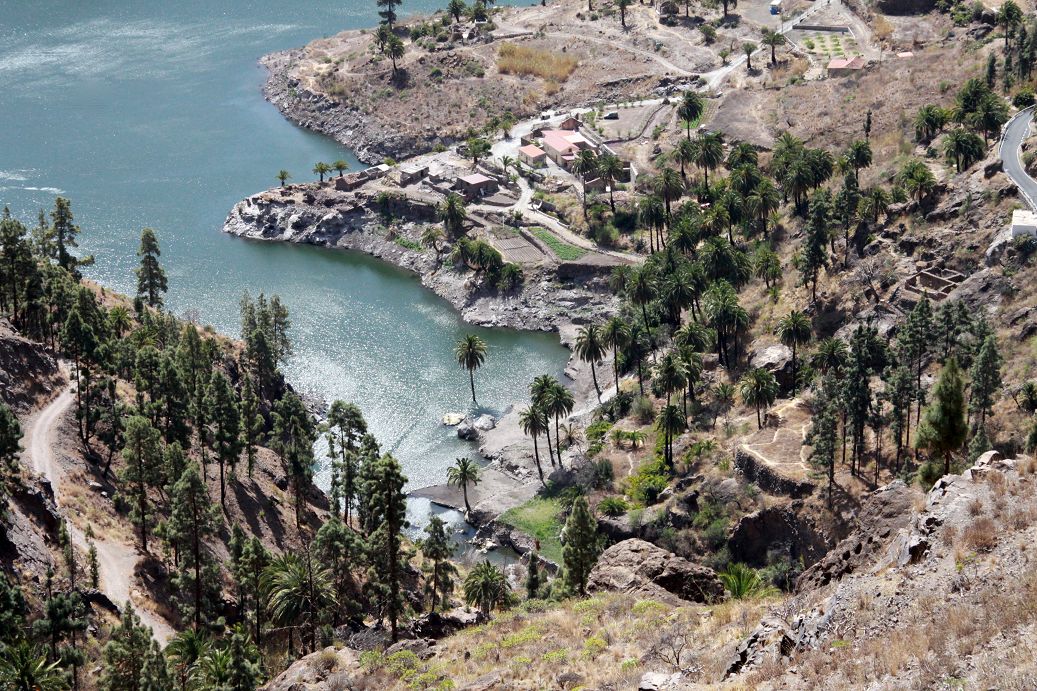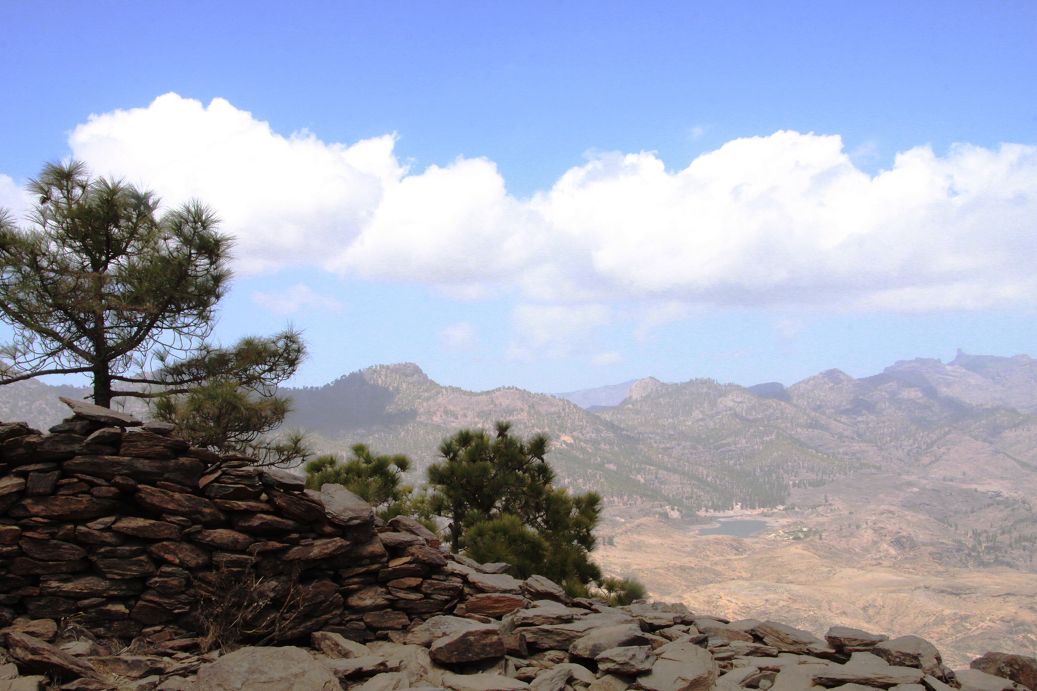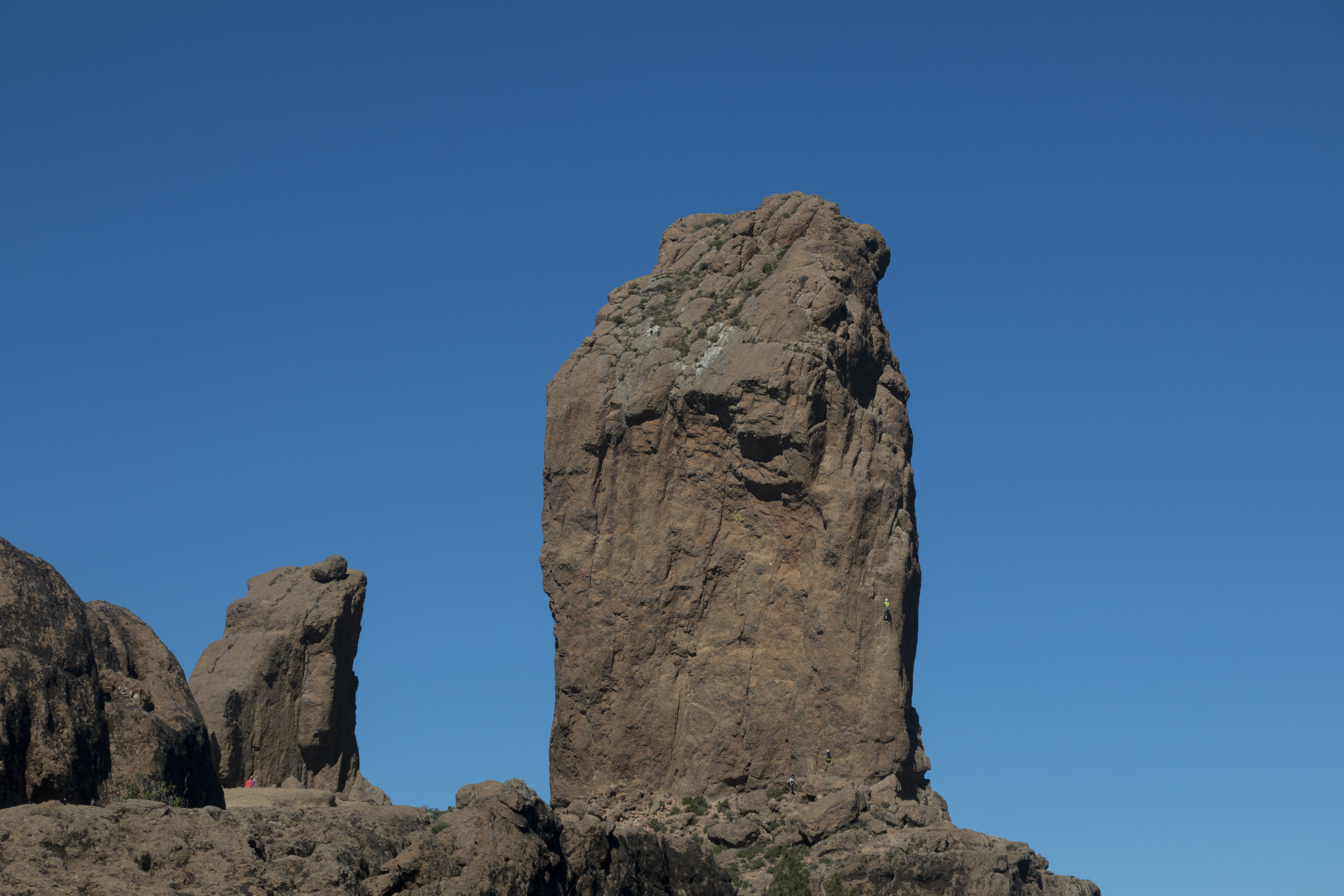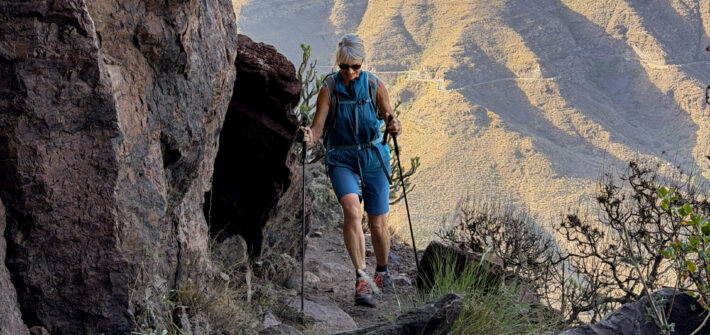From the Degollada de la Aldea through an Impressive Steep Wall to the Inagua The large circular hike from the Degollada de la Aldea to the Inagua Nature Reserve begins with a walk through an impressive steep wall. The path runs directly along the rock band and will then lead you through a side valley […]
Gran Canaria
Gran Canaria in numbers
Gran Canaria, with the capital Las Palmas de Gran Canaria, is the third largest of the Canary Islands in terms of land area with 1532 square kilometres. It is circular and has a diameter of approximately 50 kilometres. But of the population, it is with its nearly 850.000 inhabitants on place two just behind Tenerife. The distance to the African coast is 210 kilometres.
As the island is so rich in contrasts in landscape and has a lot of variety to offer, the island is also often called a miniature continent. Wide areas of the island are protected in 32 parks.
Landscape, climate, vegetation
As on the neighbouring islands, the climate in Gran Canaria is divided in two. The north is more humid and the vegetation greener. And the south of the island is rather dry and warmer. Due to this and the different altitudes, the Canary Island has different vegetation zones.
In the north there were, as still today on the neighbouring islands, until the 15th century mainly laurel forests. But these have disappeared on Gran Canaria except for a few remaining areas. They were cut down because the wood was needed for the construction of the sugar industry at that time. However, there are again numerous Canarian pines in the heights of the island today. The pine stands had also been cleared extensively. But the tough Canarian pine survived.
In the dry beach regions, there are beach bushes and bushes that depend on the salty wind. In the interior you will find Canarian palms, dragon trees, spurge and the viper’s head. Day temperatures on the island average between 18 and 26 degrees all year round.
History, economy and tourism
The name Gran Canaria leads one to believe that it is related to the size of the island. But in fact it does not mean “big Canary Island”, but derives from the Latin word dog (canis) or the Berber tribe Canarii. Originally there are said to have been many dogs on Gran Canaria. Still today the Canarian Great Dane is an island landmark.
On the island the natives lived a very simple life in caves and stone houses. A little of this life can still be seen today in the museums, as for example in the Museo Canario in Las Palmas and in the Museo de la Rama in Agaete in the northwest. There are old Canarian finds or in Agaete a village with scenes from the life of the old Canarians. In the 15th century the Spaniards conquered the island.
The main source of income today is tourism. Around 3 million people visit Gran Canaria every year. Main center of tourism is the south of the island with the places Maspalomas and Playa del Inglés. Gran Canaria is also a popular holiday destination for homosexuals. The annual carnival with its South American flair is colourful and diverse like the whole island.
Interesting to know that Las Palmas de Gran Canaria in 2019 is also described as one of the 11 best places for digital nomads.
Sights on Gran Canaria
The island’s attractions include the white dunes of Maspalomas, the cave houses of Artenara, the drinking water dam in the Barranco de Arguineguin and the striking Roque Nublo in the centre of the island. But this is by far not all to do justice to the many possibilities that Gran Canaria offers for culture seekers, athletes and hikers.
Gran Canaria is also very popular with cyclists. Everywhere you will see them cycling on roads and paths. Accordingly, there are also many small bars that specialize in refreshment for cyclists.
Hiking in Gran Canaria
The term “miniature continent” also refers to the varied nature that awaits you in Gran Canaria. Besides volcanoes you will find thelarge white dune fields of Maspalomas in the south as not only a strong colour contrast. There are barrancos, reservoirs and subtropical valleys. The highest volcano of the island is the Pico de las Nieves with its 1.949 meters. In its neighbourhood is also the above mentioned 1813 meter high Roque Nublo. Daring climbers try their hand at this rock. Those who only want to do a small hike will definitely walk on the small circular path around this striking rock.
But Gran Canaria offers wonderful hiking tours around the whole island. I especially like the hike in the western part of the island through lonely Barrancos to the remote beach of Güi Güi. For those who prefer to go inland to the mountains, we recommend the hike through the nature reserve Inagua.
The island of Gran Canaria with its numerous nature parks has much more to offer than just the tourist strongholds in the south. If you want to get more information, you can do this here on the official homepage of Gran Canaria.
Hike to Roque Bentayga: Natural Wonder and Sacred Site of the Guanches
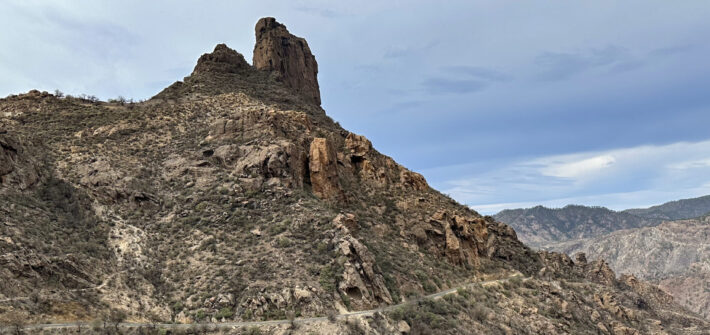
Roque Bentayga – History Between Rocks and Ravines Roque Bentayga rises prominently from the centre of Gran Canaria and is one of the island’s most striking natural monuments. At approximately 1,404 metres, this basalt rock towers over the central massif, offering expansive views of the surrounding ravines, volcanic cones, and rugged landscape. The distinctive rock […]
Through Wild Gorges and Quiet Villages: Circular Hike Fontanales – Valsendero
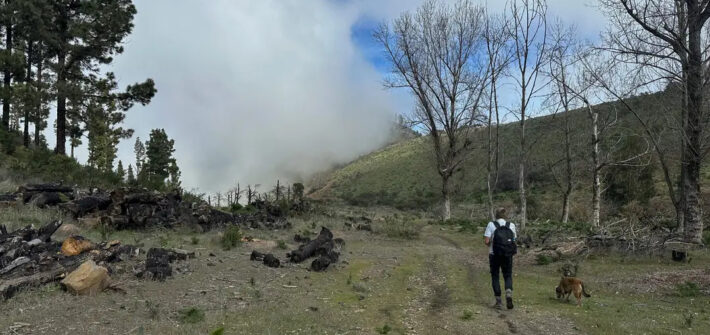
Valsendero – Hiking through one of the greenest regions of Gran Canaria In the green north of Gran Canaria, far from the sun-drenched beaches in the south, the island reveals a completely different side. Here, in the area of Fontanales, Valsendero and the Barranco del Agua, the climate is shaped by moist trade wind clouds, […]
Valleseco – Varied circular hike in the green north of Gran Canaria
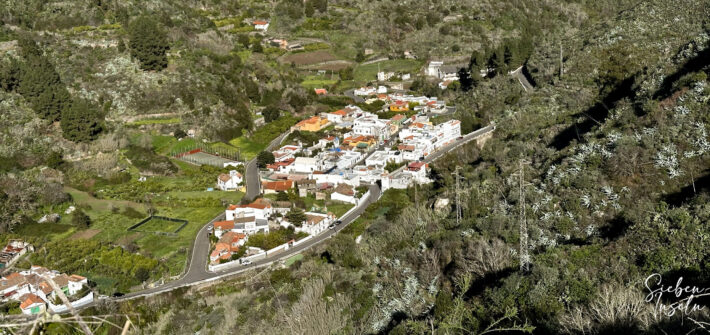
Valleseco – not as dry as the name suggests Valleseco is a small, quiet municipality in the northeast of Gran Canaria with around 3,800 inhabitants and lies approximately 1,000 metres above sea level. The name literally means “dry valley” – an apparent contradiction, as in reality, Valleseco is one of the rainiest places on the […]
Peaceful circular walk through the Reserva Natural Especial Los Tilos de Moya
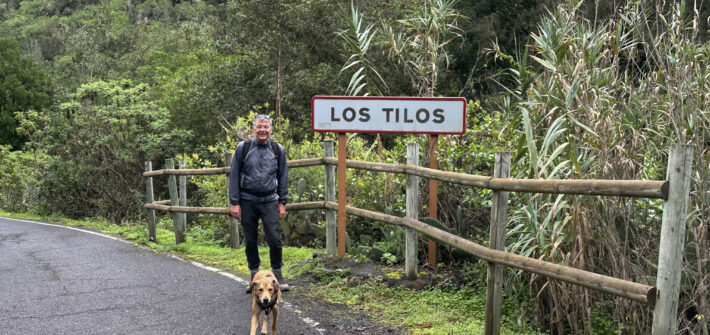
Reserva Natural Especial Los Tilos de Moya The Reserva Natural Especial Los Tilos is home to some of the last remaining subtropical laurel forests (laurisilva) on Gran Canaria. Once, the laurel forest covered large parts of the island, but today it has been reduced to around 91 hectares. This protected forest is part of the Doramas Rural […]
Grand Circular Hike from Artenara through the Tamadaba Natural Park

Tamadaba Natural Park – An Untouched Natural Paradise in the West of Gran Canaria First of all, I must mention that although we had good weather for hiking (cloudy), unfortunately, the photos all appear quite grey and do not truly reflect the beauty of the landscape. The Tamadaba Natural Park spans approximately 7,500 hectares in […]
Grand Circular Hike to the Cuevas de Caballero
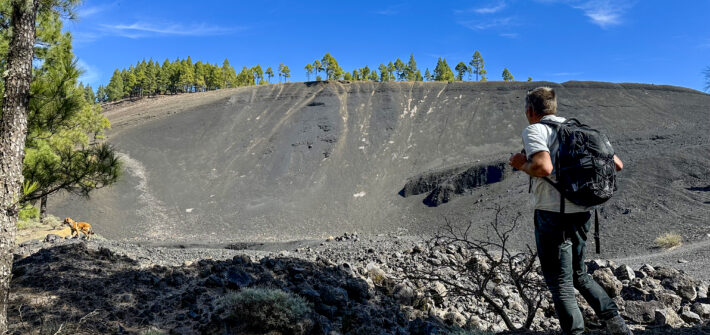
The Cuevas de Caballero On this beautiful circular hike, you will also reach the Cuevas de Caballero via the upper ridge path. These caves, among many other interesting sights you will encounter throughout the hike, are the highlight of this tour. The Cuevas de Caballero are among the most fascinating cave systems on the island […]
From Artenara to Cruz de Tejeda via a Varied Ridge Trail
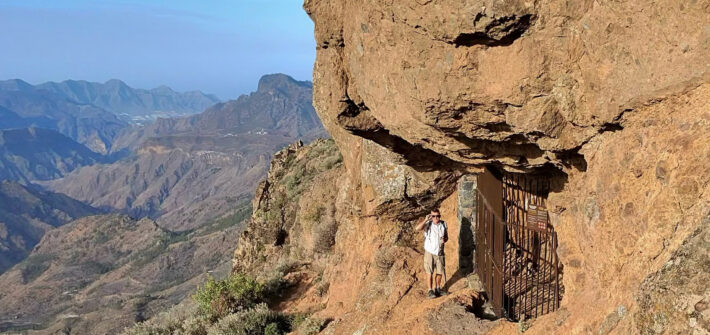
Hiking in and around Artenara Artenara, situated at an altitude of approximately 1,200 metres, is the highest village on Gran Canaria. It stands out for its spectacular location within the island’s Biosphere Reserve and offers breathtaking views of the surrounding mountains, valleys, and ravines. Artenara is renowned for its cave dwellings, carved into the volcanic […]
A Short Circular Walk Around the Montaña de Artenara
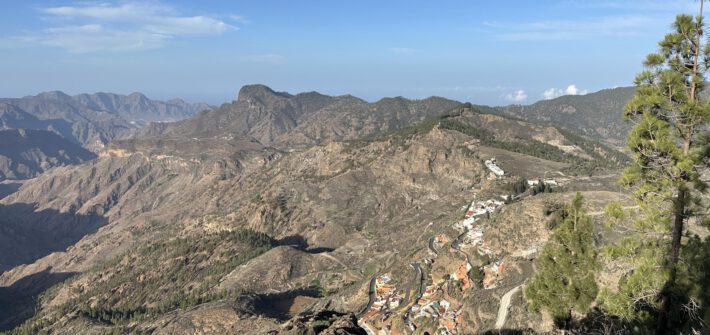
Artenara and the Montaña de Artenara Artenara, situated at an altitude of approximately 1,200 metres, is the highest village on Gran Canaria. It captivates visitors with its spectacular location in the island’s Biosphere Reserve and offers breathtaking views of the surrounding mountains, valleys, and ravines. Artenara is renowned for its cave dwellings carved into volcanic […]
Short Walk Above Aldea de San Nicolás – Degollada de Tasartico
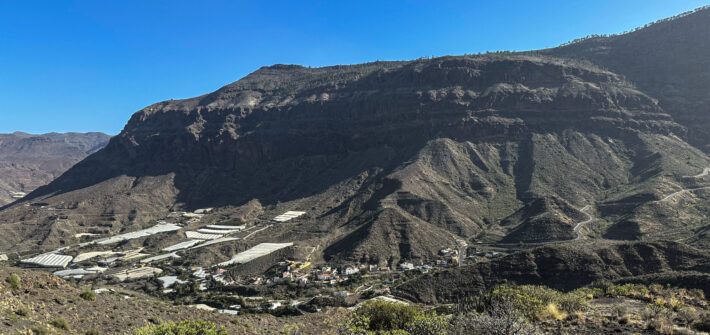
Aldea de San Nicolás, Tasarte, and the Inagua Nature Reserve Aldea de San Nicolás and its smaller neighbour, Tasarte, are two typical Canarian villages located in the southwest of Gran Canaria, distinguished by their stunning natural landscapes and rich history. The village boasts a population of nearly 8,000 residents. Surrounded by impressive mountains and the […]
